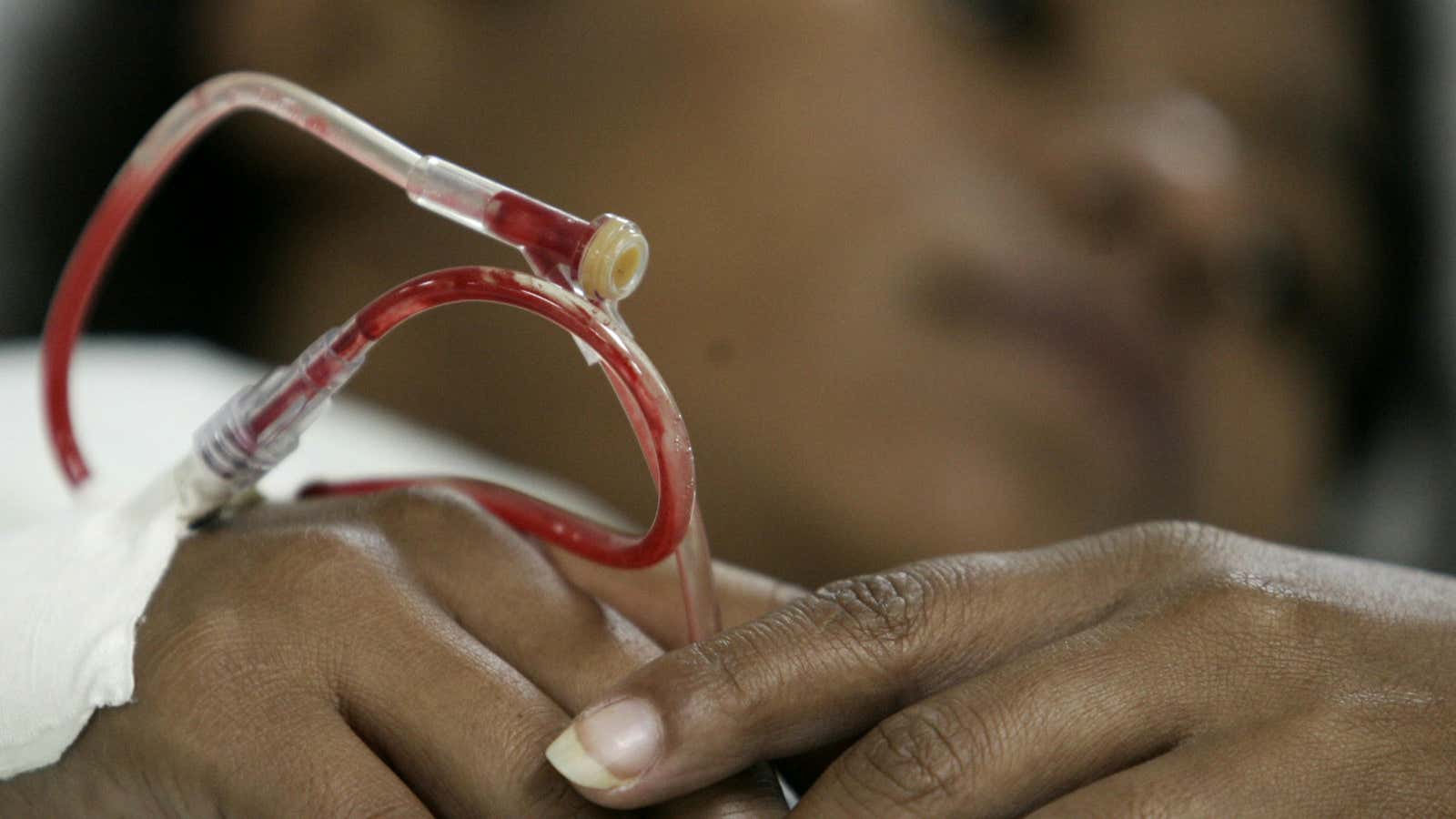In the 17 months between Oct. 2014 and March this year, some 2,234 persons across India have contracted the human immunodeficiency virus (HIV) following blood transfusion, according to the National AIDS Control Organisation (NACO).
NACO, part of India’s ministry of health and family welfare, released the data in reply to a right to information (RTI) request by activist Chetan Kothari in April 2016.
Here’s the state-wise breakup of HIV infections due to blood transfusions, according to data provided by Kothari:
While HIV is typically transmitted through sexual contact, it can also be passed on through blood or from a mother to her child. India has a law overseeing blood transfusions, under the Drug and Cosmetics Act, 1940, which mandates the screening of donors or donated blood for infections such as HIV, HBV, hepatitis C, malaria, and syphilis.
About 20 years ago, according to NACO deputy director general Naresh Goyal, between 8% and 10% of the total HIV infections in India were reported through transfusions. Now, that number is at around 1%.
“We have conquered this route of infection. It is now legally mandatory for every blood bank to screening the units before giving it to a patient,” Goyal told The Hindu newspaper.
“In some cases, the donor may be in a window period—before his HIV viral load can be detected—when he donates the blood. In such cases, when screened, the blood sample shows a false negative,” Goyal added.
But the problem doesn’t seem to be under control.
Earlier this month, for instance, a three-year-old boy was allegedly infected with HIV after a blood transfusion at the Guwahati Medical College and Hospital in the north-eastern state of Assam. And NACO’s latest data suggests that this isn’t an isolated situation.




